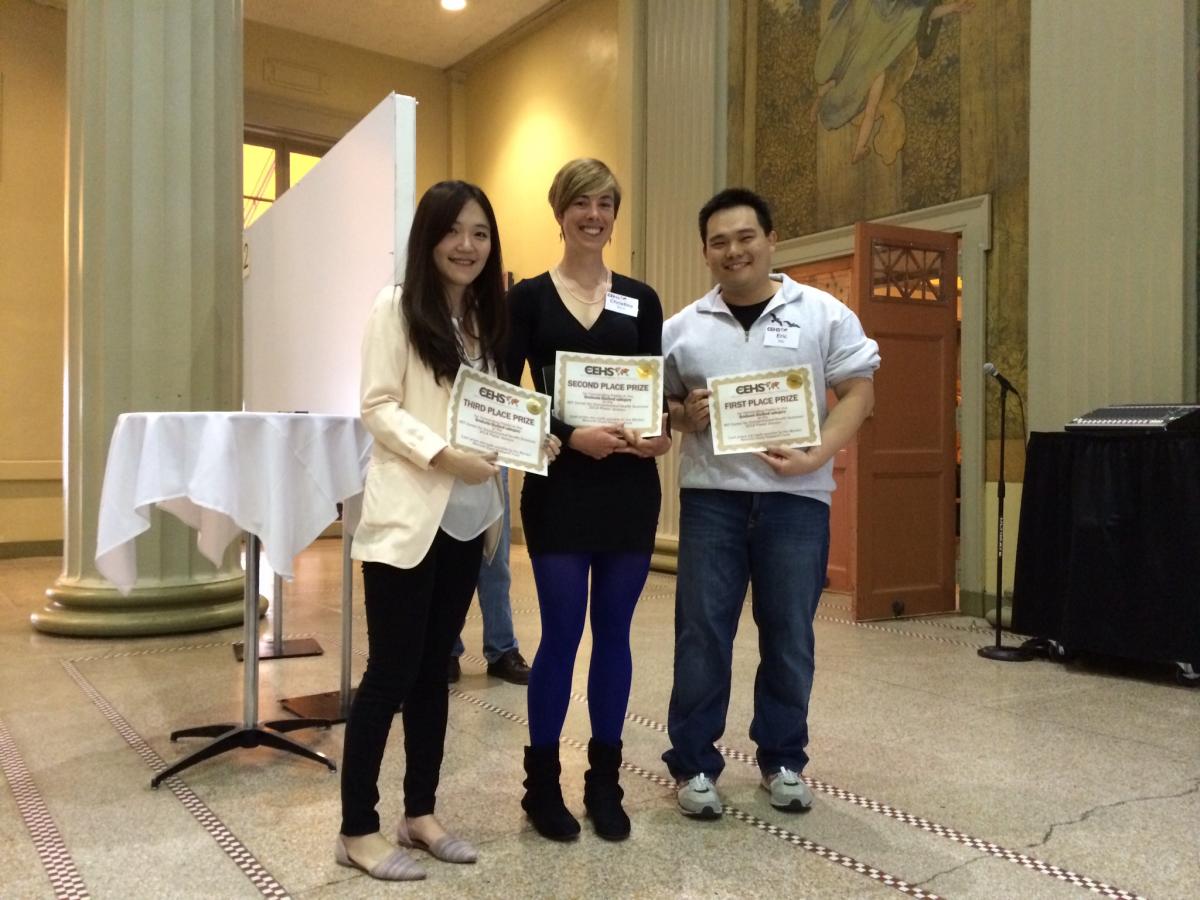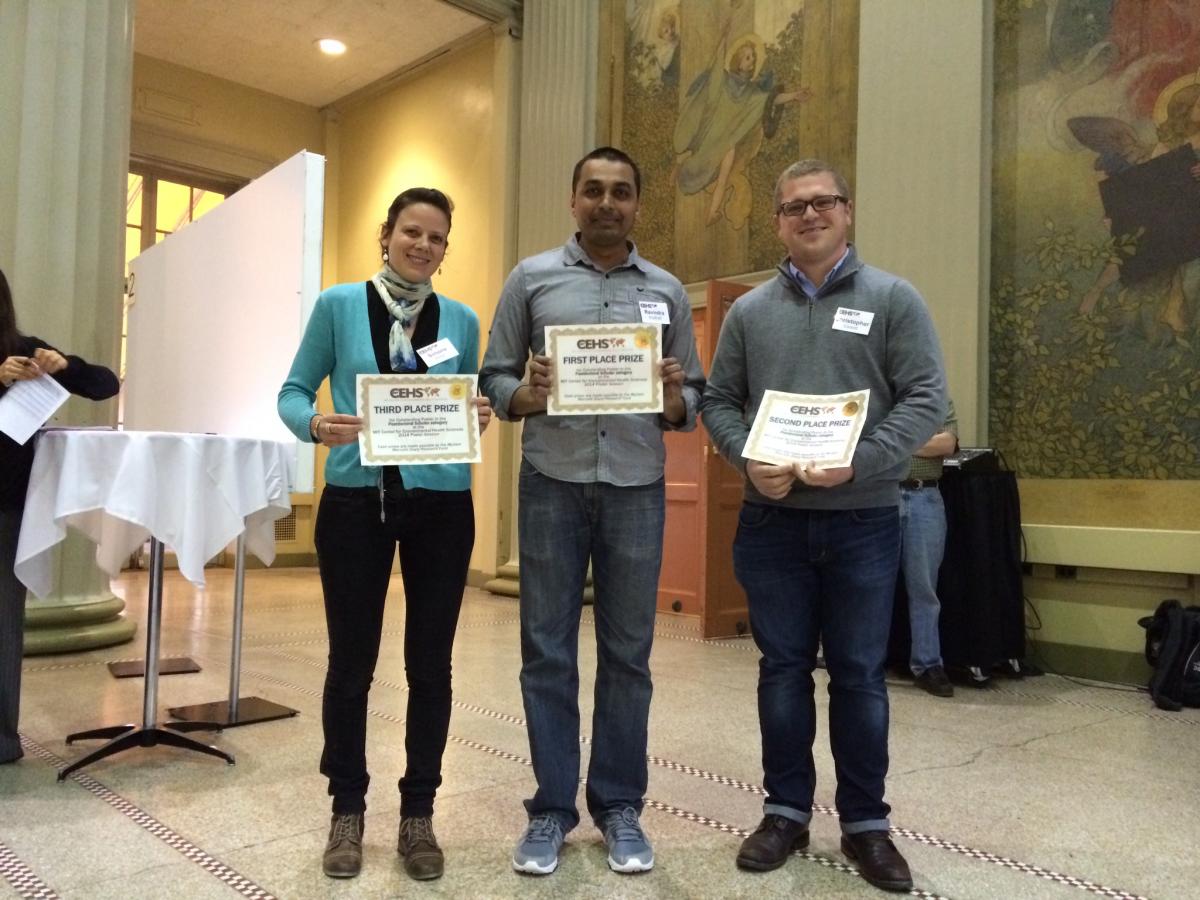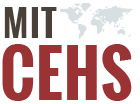2014
The Center for Environmental Health Sciences (CEHS) at MIT has awarded two basic science and three translational pilot projects with a start date of July 1, 2014 from the May pilot project call released this year.
Basic science pilot projects:
- Investigating Uncertainties in Satellite – Derived Estimates of Premature Mortality Associated with Particulate Matter Colette Heald
- Understanding and Ameliorating Arsenic – Induced Protein Misfolding Matthew Shoulders
Translational pilot projects:
- Sulfur DNA modifications in gut microbes confer resistance to oxidative stress, Peter Dedon, James Fox, and Eric Alm
- The role of arsenic in adult brain pathology. Translational studies in the mouse. Steve Tannenbaum
- Can microbiome therapy cure IBD in sick dogs? Eric Alm and Susan Erdman
The Center for Environmental Health Sciences (CEHS) at MIT held its annual poster session on May 9, 2014 at the Morss Hall, Walker Memorial Building (50-140). The session highlighted the work of the environmental health research communities of MIT and some of our sister institutions. Sixty posters were presented from the science and engineering laboratories affiliated with the Center. We would like to thank all of the poster presenters for participating in this event.
The CEHS has an overall mission to study the biological effects of exposure to environmental agents in order to understand, and predict, how such exposures affect human health. Moreover, by uncovering the chemical, biochemical and genetic bases for environmental disease, sometimes we are able to leverage that understanding to delay or even prevent the development of disease in human populations. To that end, the center brings together 35 MIT faculty members from a total of nine MIT departments (in both the School of Science and the School of Engineering) plus two Harvard faculty members; from the Harvard School of Public Health (HSPH) and the Harvard Medical School affiliated hospital (Massachusetts General Hospital).
This year’s CEHS cash prizes were increased significant which are awarded in two categories, graduate students and postdoctoral scholars. For each category, the prize for first-place was $1,000, second-place prize was $500, and the third-place prize was both $200 and CEHS memorabilia. The cash prizes were made possible by the Myriam Marcelle Znaty Research Fund, which was established nearly 30 years ago to support the research of young scientists at MIT.
Graduate Student Winners:

Graduate Student winners (from left to right): Jing Ge (3rd place), Christina Birch (2nd place), and Eric Ma (1st place).
1st place: Eric Ma of Professor Jonathan Runstadler’s lab: “Development of Network-Based Methods for Identifying Reassortant Influenza Viruses.”
2nd place:Christina Birch of Professor Jacquin Niles’ lab: “RNA Aptamersfor Studying Pregnancy-Associated Malaria.”
3rd place:Jing Ge of Professor Bevin P. Engelward’s lab: “CometChip: Enabling Translation of DNA Damage and Repair Assays.”
Postdoctoral Scholar Winners:

Postdoctoral Scholar winners (from left to right): Simone Moser (3rd place), Ravindra Kodihalli (1st place), and Christopher Corzett (2nd place).
1st place: Ravindra Kodihalli of Professor Steven R. Tannenbaum’s lab: “Functional Proteomics of Matrix Metalloproteases in a Model of Osteoarthritis.”
2nd place: Christopher Corzett of Professor Martin F. Polz’s lab: “The Ecology of Algal Polysaccharide Degradation: Characterizing Novel Fucoidan-Degrading Bacteria.”
3rd place: Simone Moser from Elizabeth M. Nolan’s lab: “Probing the Effects of Human Defensin 5 on E. Coli Using Microscopy and a Genetic Screening Approach."
The MIT Center for Environmental Health Sciences (CEHS), funded by the National Institute of Environmental Health Sciences (NIEHS), invites MIT faculty and research staff with.

